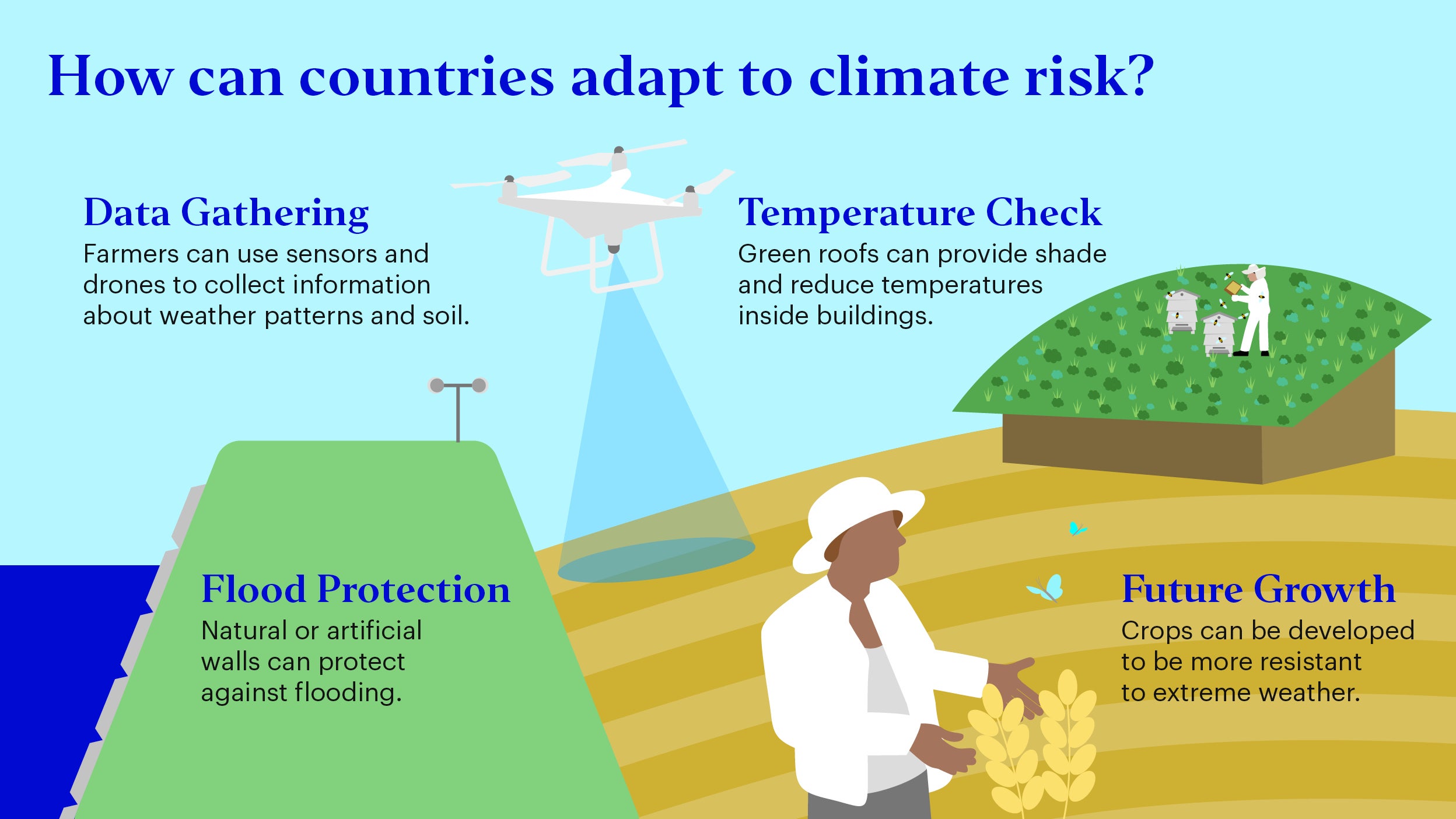How the investment industry can mobilise climate adaptation finance
So far, the broader public sector, including multilateral development banks (MDBs) and development finance institutions (DFIs), have played a major role in financing climate adaptation projects.
The IMF recently set up the Resilience and Sustainability Trust, its first ever long-term affordable financing facility, to support vulnerable countries tackling the challenges of climate disasters. However, a report by the Global Center for Adaptation (GCA) suggested “public spending alone cannot meet the adaptation finance gap, so private sector investment must scale alongside public investment to supplement limited public resources.”5 The GCA was set up in 2018 to support government and private sector financing for climate adaptation efforts.
The investment industry can offer institutional clients the opportunity to scale up climate adaptation investments in developing countries.
Multilaterals and supranational organisations are increasingly engaging with asset managers and other institutions to develop and issue climate bonds. The Asian Infrastructure Development Bank has just launched its first Climate Adaptation Bond. Investments will include water, urban development, transportation and energy.6
Challenges remain with GSS bond issuance being dominated by developed market issuers and skewed towards climate mitigation projects in the energy and transport sectors. These remain heavily funded compared to other adaptation projects.
To meet institutional standards and unlock private capital at scale, more origination and standardisation of information disclosure by issuers is required. Issuers in developing countries need more technical assistance to showcase how GSS debt instruments operate in practice, including guidance on how eligible adaptation projects are selected and evaluated, impact reporting and the role of external reviewers.
Transitioning to a net zero economy
In developed economies, action towards climate impacts are more focused on mitigation or transitioning efforts to reduce or prevent greenhouse gas emissions. The effort in these countries has been on moving towards more renewable energy sources like solar and hydrogen, adoption of more sustainable food production practices and the implementation of technologies to mitigate greenhouse gases.
But getting to net zero is challenging and the trends have not been encouraging. According to Invesco’s Economic Transition Monitor, the CO2 intensity of economic activity needs to fall dramatically – far more than in recent decades – in order to achieve a global net zero economy.7 Recent research from environment disclosure firm CDP showed that among the 18,600 companies providing data, only 0.4%8 were assessed as having credible transition plans.
Nonetheless, policy initiatives and government regulations in Europe have set out goals for companies to follow. COP27 saw the launch of the Transition Plan Taskforce and Net Zero Guidelines to help guide companies and governments in establishing their transition plans.
The European Union’s Green Deal Net Zero Industry Act (NZIA) is also expected to be a game changer for EU companies transitioning to net zero emissions. This legislation fast tracks the development of net-zero technologies like renewable energy to help strengthen the EU’s move towards climate neutrality.
Companies investing in these types of technologies may be able to improve their top line growth rates by pulling forward future sales (recognising sales that would have occurred in future quarters in the current quarter). In our Pan European Small Cap Equity strategy we own petrochemical company, Technip Energies. The energy company offers innovative, carbon-free energy solutions in green hydrogen and offshore wind that help to grow, diversify and lengthen its order book.
The NZIA also requires at least 40% of clean energy equipment to be manufactured within Europe. This will accelerate demand for European-based manufacturers and suppliers like solar cell maker Meyer Burger. €375 billion in grants, tax credits, direct investments and loans from the NZIA will help to spur additional capital and operating expenditures, as well as tax support, to fund growth plans.
But the transition to a net zero global economy still faces significant challenges. Questions remain how to properly define “transition,” assess related progress and balance shorter-term financial implications.
There’s still a lot to be done in both climate adaptation and transition to address climate risks and ensure a resilient future. Further investment from large, long-term investors like pension schemes and insurers, could also help ensure positive change. If companies and governments are to meet their goals significant additional funds will be desperately needed.







